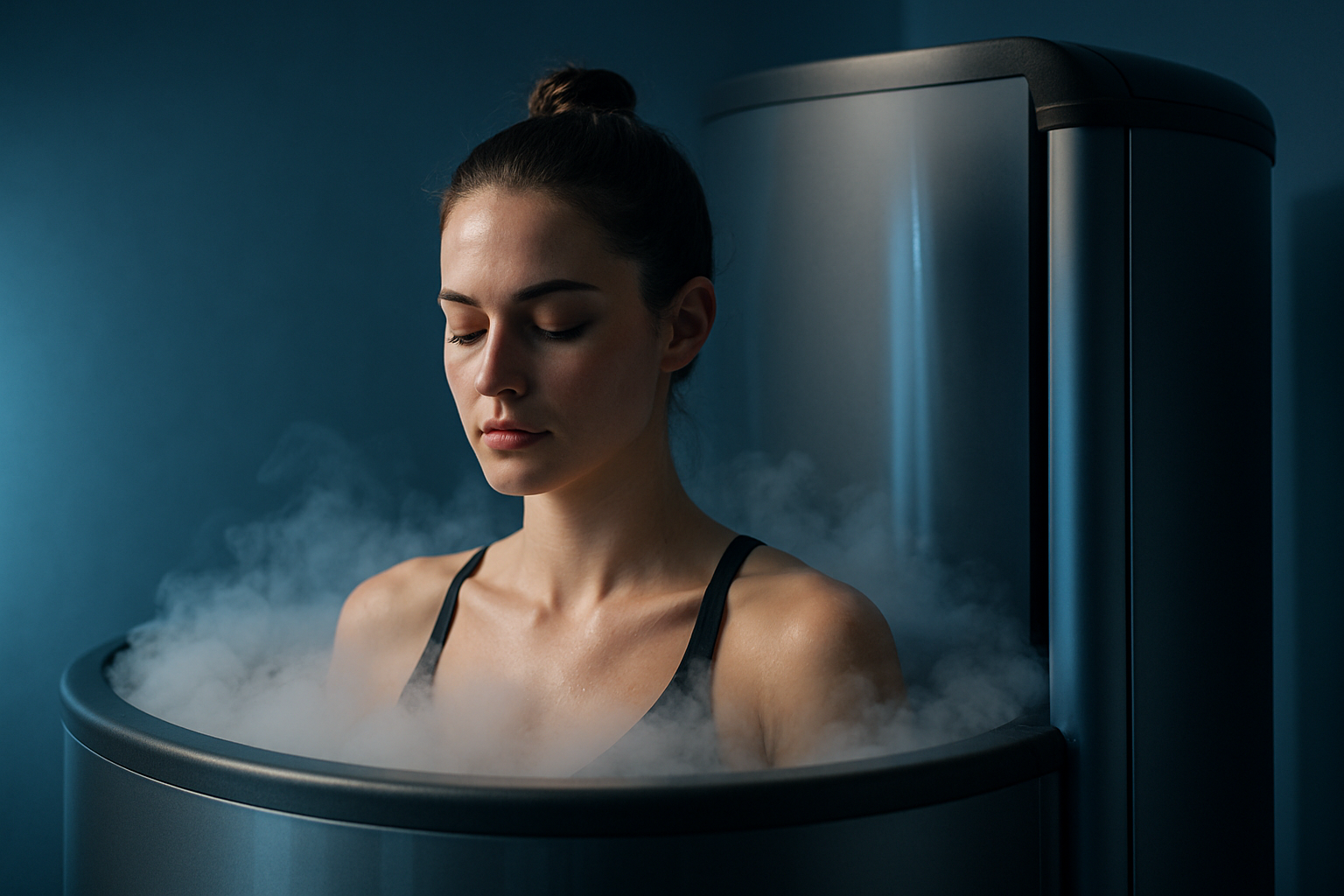Cryotherapy: The Cold Revolution in Wellness
In a world where health and beauty trends come and go, one icy innovation has been steadily gaining traction: cryotherapy. This cutting-edge treatment, which involves exposing the body to extremely low temperatures for short periods, has captured the attention of athletes, celebrities, and wellness enthusiasts alike. Cryotherapy's allure lies in its promise of rapid recovery, enhanced performance, and potential beauty benefits. As more people seek alternative ways to boost their well-being, this frosty technique has emerged as a fascinating frontier in the ever-evolving landscape of personal care and fitness.

Initially confined to medical settings, cryotherapy gradually expanded its reach. In the 1980s, it gained popularity in Europe, particularly among athletes seeking faster recovery times. The treatment’s migration to the United States in the 2000s marked a turning point, as it began to transition from a niche medical procedure to a mainstream wellness trend.
The Science Behind the Chill
Cryotherapy works on the principle of hormesis - the biological phenomenon where a beneficial effect results from exposure to low doses of an agent that is otherwise toxic or lethal when given at higher doses. When subjected to extreme cold, the body initiates a series of physiological responses aimed at preserving core temperature and vital functions.
During a typical whole-body cryotherapy session, which lasts between two to four minutes, the skin’s surface temperature can drop to 32°F (0°C) while core body temperature remains stable. This rapid cooling triggers several responses:
-
Vasoconstriction: Blood vessels near the skin’s surface constrict, redirecting blood flow to vital organs.
-
Endorphin Release: The body releases endorphins, natural pain-relieving and mood-elevating hormones.
-
Anti-inflammatory Response: Cold exposure can reduce inflammation by decreasing the production of inflammatory mediators.
-
Metabolic Boost: The body burns calories to rewarm itself post-treatment.
These physiological changes form the basis for cryotherapy’s purported benefits, which range from pain relief and muscle recovery to skin rejuvenation and mood enhancement.
Cryotherapy in Sports and Fitness
The fitness industry has been quick to embrace cryotherapy, with many professional athletes and teams incorporating it into their recovery regimens. The treatment’s ability to potentially reduce muscle soreness and inflammation has made it particularly appealing in high-intensity sports.
Research on cryotherapy’s effectiveness in sports performance and recovery has yielded mixed results. A 2015 Cochrane review found that while whole-body cryotherapy may reduce muscle soreness after exercise, there was insufficient evidence to determine its effectiveness for preventing or treating muscle damage. However, many athletes report subjective benefits, including improved recovery times and reduced perceived exertion in subsequent training sessions.
Cryotherapy centers have proliferated in fitness-centric cities, offering both whole-body and localized treatments. Some high-end gyms and sports facilities have even installed cryotherapy chambers, positioning the treatment as a premium recovery option for their members.
Beauty and Skincare Applications
Beyond its applications in sports and fitness, cryotherapy has made inroads into the beauty and skincare industry. Proponents claim that the extreme cold can tighten pores, boost collagen production, and improve skin tone and texture.
Facial cryotherapy, often delivered through specially designed wands or masks, has gained popularity as a non-invasive alternative to traditional facial treatments. The cold is said to constrict blood vessels, potentially reducing puffiness and giving the skin a temporarily tighter appearance.
Some skincare brands have developed cryotherapy-inspired products, such as cooling face masks and rollers, designed to mimic the effects of professional treatments at home. While these products cannot replicate the extreme temperatures of clinical cryotherapy, they tap into the growing consumer interest in cold therapy for beauty purposes.
The Cryotherapy Experience
A typical whole-body cryotherapy session involves stepping into a chamber or cabin that exposes the body to temperatures as low as -200°F (-129°C) using liquid nitrogen or refrigerated cold air. Participants wear minimal clothing, usually gloves, socks, and protective footwear, to prevent frostbite on extremities.
The experience is often described as intense but invigorating. Many users report a rush of energy and euphoria post-treatment, attributed to the endorphin release triggered by the cold exposure. This “cryohigh” has contributed to the treatment’s popularity among those seeking natural mood boosters.
Localized cryotherapy treatments, which target specific areas of the body, are also available. These may use handheld devices that direct cold air or cryogenic liquids to problem areas, such as injured muscles or joints.
Safety Considerations and Contraindications
While cryotherapy has gained widespread acceptance, it is not without risks. Prolonged exposure to extreme cold can lead to frostbite, and there have been rare cases of severe adverse reactions. Individuals with certain health conditions, such as hypertension, heart disease, or Raynaud’s syndrome, are generally advised to avoid cryotherapy.
The U.S. Food and Drug Administration (FDA) has not cleared or approved whole-body cryotherapy devices for medical treatment of any specific medical conditions. The agency warns that cryotherapy can pose health risks and emphasizes the importance of proper supervision and adherence to safety protocols.
The Future of Cryotherapy
As research into cryotherapy continues, its applications may expand beyond current uses. Some scientists are exploring its potential in areas such as mental health, sleep improvement, and even weight management. The development of more sophisticated and safer cryotherapy devices could also make the treatment more accessible and tailored to individual needs.
The integration of cryotherapy with other wellness technologies, such as biometric tracking and personalized health analytics, may lead to more targeted and effective treatments. As the wellness industry increasingly focuses on holistic approaches to health and beauty, cryotherapy is likely to remain a cool contender in the quest for optimal well-being.
In conclusion, cryotherapy represents a fascinating intersection of ancient wisdom and modern technology in the pursuit of health and beauty. While questions remain about its long-term efficacy and optimal protocols, its growing popularity reflects a broader trend towards innovative, science-based approaches to wellness. As research progresses and technology evolves, cryotherapy may well cement its place as a cornerstone of 21st-century self-care.





